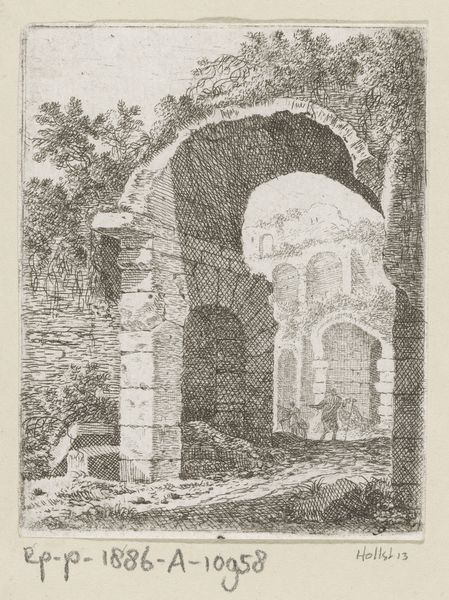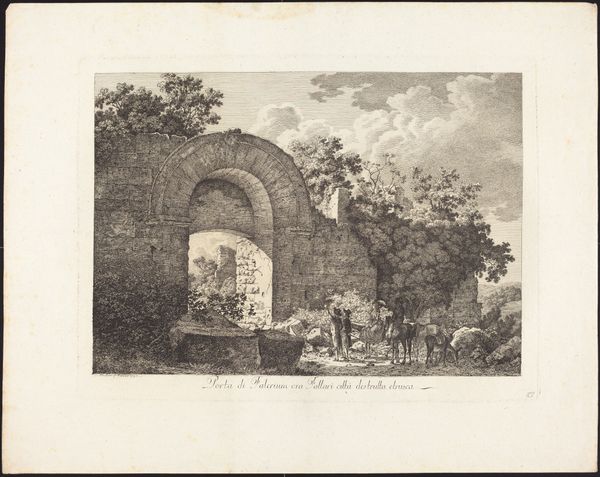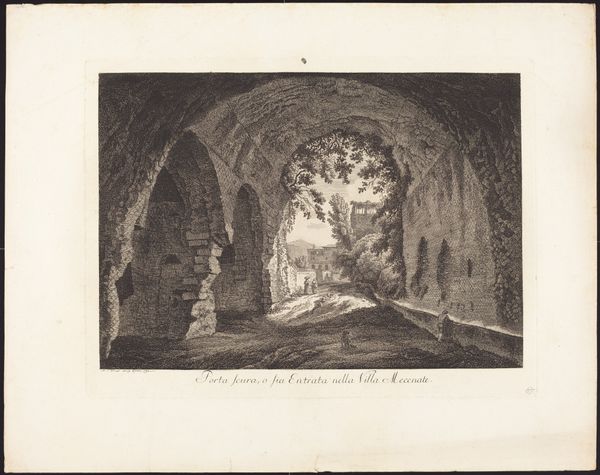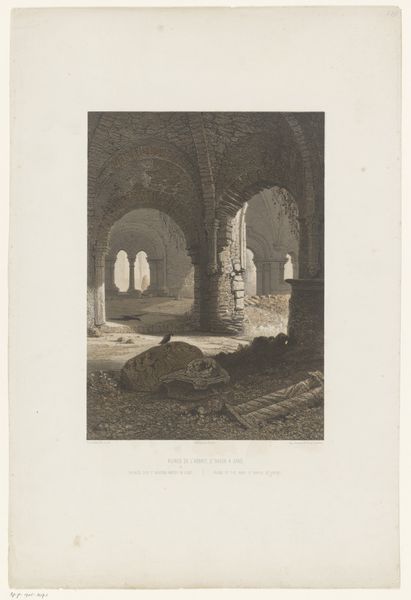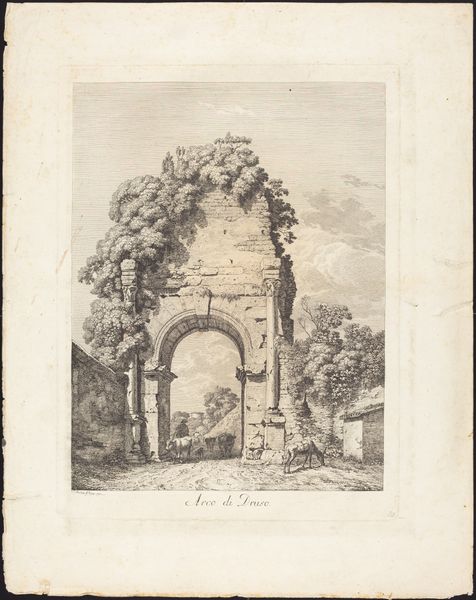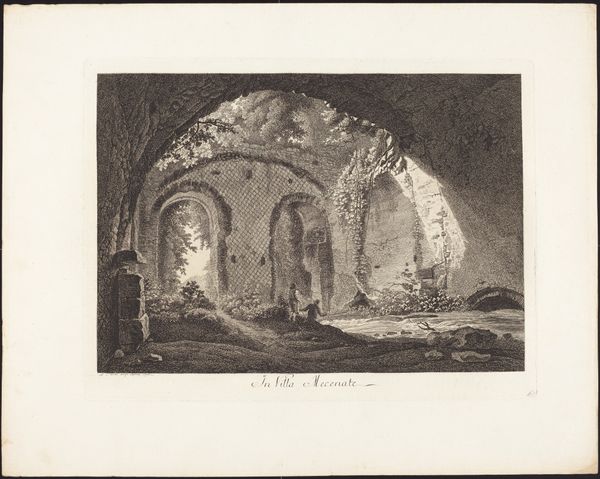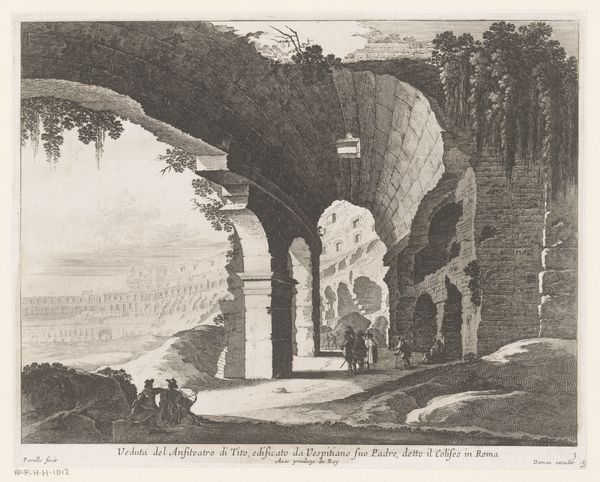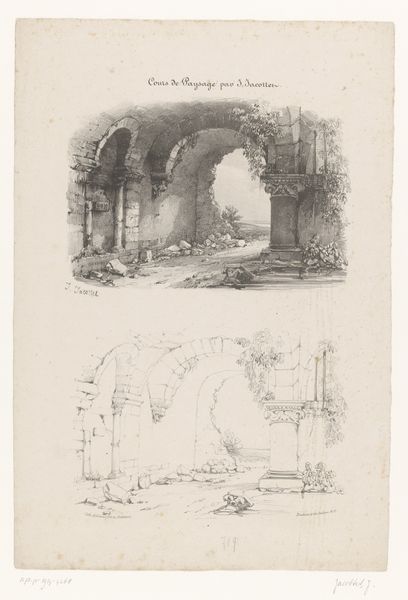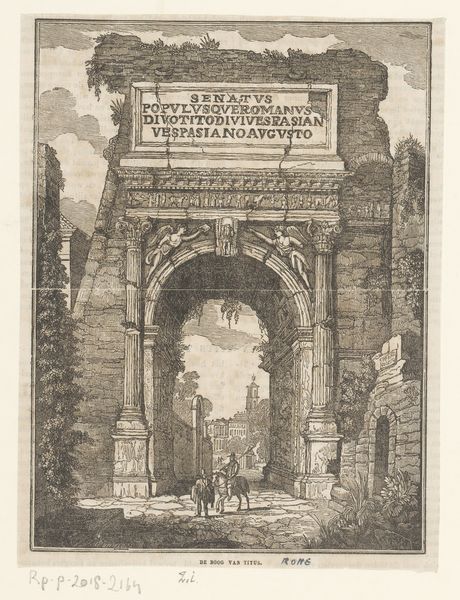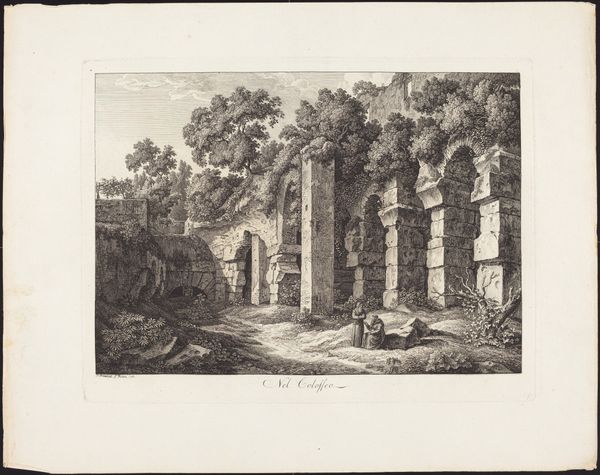
drawing, print, engraving, architecture
#
drawing
#
neoclacissism
# print
#
landscape
#
arch
#
cityscape
#
engraving
#
architecture
Dimensions: 6 9/16 x 5 5/16 in. (16.6 x 13.5 cm)
Copyright: Public Domain
Editor: This is "Classical Ruins: A Public Bath" by Joseph Lemercier, made sometime between 1800 and 1900. It looks like an engraving, showing the remains of some grand architecture. What jumps out to me is the contrast between the imposing ruins and the ordinary people strolling through them. What can you tell me about it? Curator: Well, focusing on materiality, we have to consider this engraving not just as a representation, but as an object itself, made through specific labor. The lines, meticulously etched into a metal plate, then pressed onto paper. What does the choice of engraving, as a reproductive medium, tell us about access and consumption of classical imagery at this time? Was it about democratization, or reinforcing class distinctions? Editor: That’s an interesting point. I hadn’t thought about the actual labor involved. Does the choice of medium also comment on the relationship between the industrial revolution and the nostalgia for a classical past? Curator: Precisely. Consider the context: industrial advancements allowed for mass production of images, yet there was a concurrent fascination with pre-industrial, classical societies. This print becomes a commodity, reproducing an idealized past through the mechanics of a rapidly changing present. The labor is then two-fold: the physical toil of the engraver and printer, and the less tangible labor of preserving an idea of “classicism” through the very tools changing society. Think too about the quality of the paper and the ink. Were these costly? Made for a specific market? Editor: So it's not just a picture of ruins, but also a commentary on the process of remembering and manufacturing history? Curator: Exactly. It asks us to question who had access to this vision of the classical world, and what purpose its mass production served. Even the depicted figures contribute to that discussion: Who were they? The leisure classes able to enjoy this vision? Or are they mere background details for commercial appeal? Editor: I see, I'm starting to understand how analyzing the materials and the means of production gives you such a richer understanding of the image. Curator: Indeed. It's not simply about what’s represented, but how that representation was created, distributed, and consumed that matters most.
Comments
No comments
Be the first to comment and join the conversation on the ultimate creative platform.

